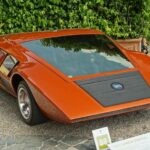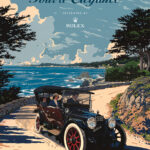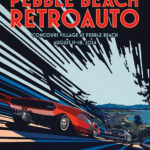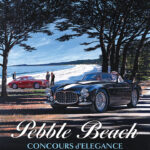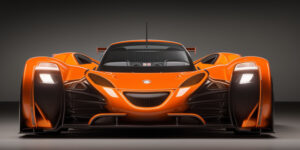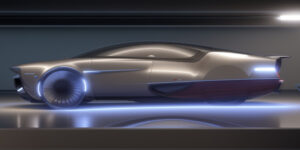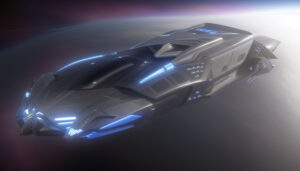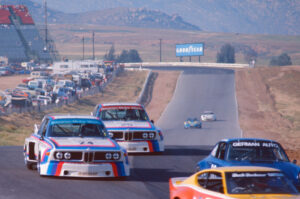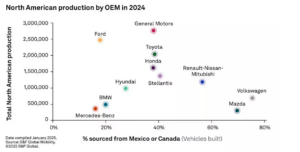Pebble Beach: A New Era Dawns
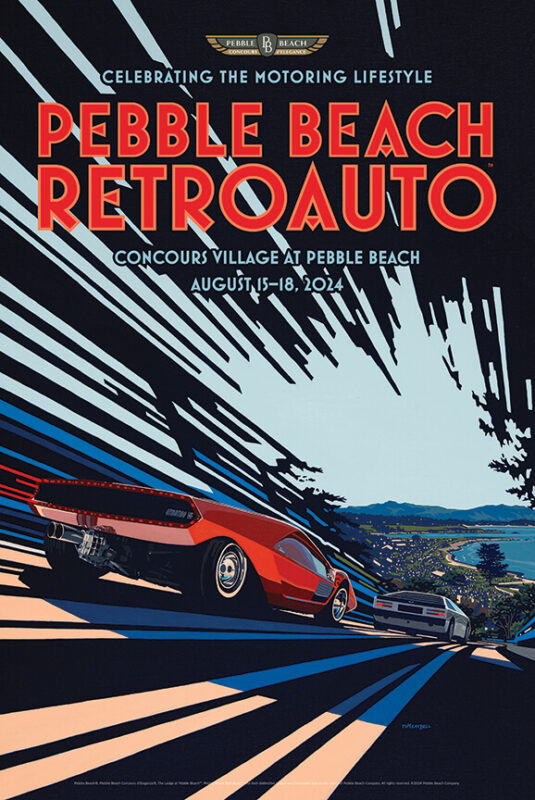
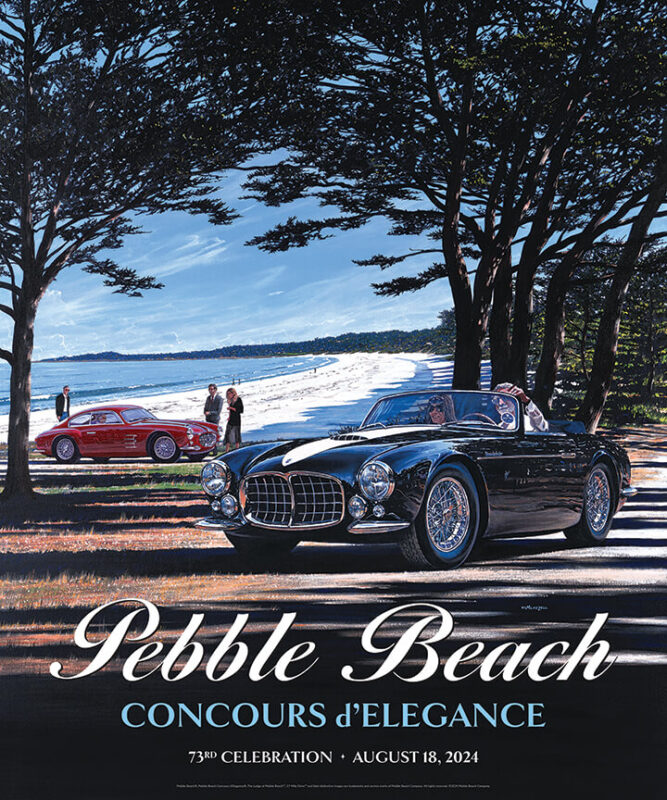
The Pebble Beach Concours d’Elegance, a hallowed pilgrimage for automotive enthusiasts, has traditionally been a sanctuary for the pre-war classics, a realm of timeless elegance and mechanical artistry. Yet, in a bold departure from its established canon, the 2023 event introduced a new chapter, casting a spotlight on the revolutionary designs that emerged in the late 1960s and 1970s. This era, often heralded as the Golden Age of Automotive Design, marked a seismic shift in the industry, a departure from the established norms that would forever redefine the automobile.
What was a bit sad to see was that both in the artwork prior to the show as well as during the actual days of the event that the Aston Martin Bulldog was presented as somehow a significant design and example of wedge design of the era when in fact it was nothing of the sorts. The Bulldog was a cheap attempt to show that British designers could also do edge designs, but without fundamental understanding of what the Italian Maestro’s had actually achieved. The Bulldog was a cheap fake, but yet the organizers of the Pebble Beach concourse decided that it was much more than it really was, probably because they’d been bullshitted into this by some English people who’s proper English accents intimidated the them to no end.
Any significant other designs from that era by Giorgetto Giugiaro, Pininfarina, Ghia, Bertone, Ghandini, Tom Tjaarda, Michelotti, and many other Italy based designers who did understand the subject, were sadly missing. It seems to show how this show is catering to well paying rich people who would love their investments showcased, rather than a real understanding of the automotive industry and the various era’s representing the development of the automobile.
A Revolution in Design
The late 1960s and early 1970s were a crucible of innovation. A confluence of factors – the burgeoning counterculture, the energy crisis, and advancements in materials and engineering – compelled designers to rethink the automobile. This era birthed a new breed of designers who, unburdened by the constraints of the past, were free to experiment and explore uncharted territories.
At the forefront of this revolution were design houses like Bertone, Pininfarina, and Italdesign, and visionary talents such as Giorgetto Giugiaro and Marcello Gandini. Their work was a radical departure from the established norms. Gone were the curvaceous forms and ornate details of the pre-war era. In their place emerged sharp edges, geometric shapes, and a relentless pursuit of functionality.
The Mid-Engine Revolution
A cornerstone of this design revolution was the exploration of new packaging configurations. The mid-engine layout, once the exclusive domain of exotic supercars, began to infiltrate the mainstream consciousness. Models like the Lamborghini Miura and Ferrari Dino exemplified the dramatic potential of this architectural shift. By positioning the engine centrally, designers achieved lower, sleeker profiles, optimizing aerodynamics and weight distribution. Moreover, the mid-engine layout liberated interior space, enabling designers to create more ergonomic and spacious cabins.
This shift in packaging was instrumental in redefining the sports car. It moved beyond mere aesthetics, offering tangible benefits in terms of handling, performance, and driver engagement. The mid-engine layout became a blueprint for future generations of high-performance vehicles.
Aerodynamics: The Science of Speed and Form
Aerodynamics emerged as a critical design parameter in the late 1960s and 1970s. The wedge shape, characterized by a low front end and a rising beltline, became synonymous with speed and modernity. Models such as the Lamborghini Countach and the Ferrari Berlinetta Boxer epitomized this design philosophy.
Beyond aesthetics, the wedge shape offered tangible advantages. By reducing aerodynamic drag, it improved fuel efficiency, a critical factor as the world grappled with the energy crisis. Moreover, the resulting downforce enhanced high-speed stability and cornering grip.
Materials and Manufacturing: A Technological Leap
The quest for performance and efficiency necessitated a rethinking of materials. The automotive industry, inspired by advancements in aerospace and racing, began experimenting with lightweight and high-strength materials. Fiberglass, carbon fiber, and advanced composites replaced traditional steel, enabling designers to create more complex and sculpted forms without compromising structural integrity.
Sandwich constructions, borrowed from Formula 1, became a cornerstone of automotive engineering. These structures, combining lightweight outer skins with a strong, rigid core, offered exceptional stiffness and crashworthiness. This technological leap forward liberated designers, allowing them to push the boundaries of form and function.
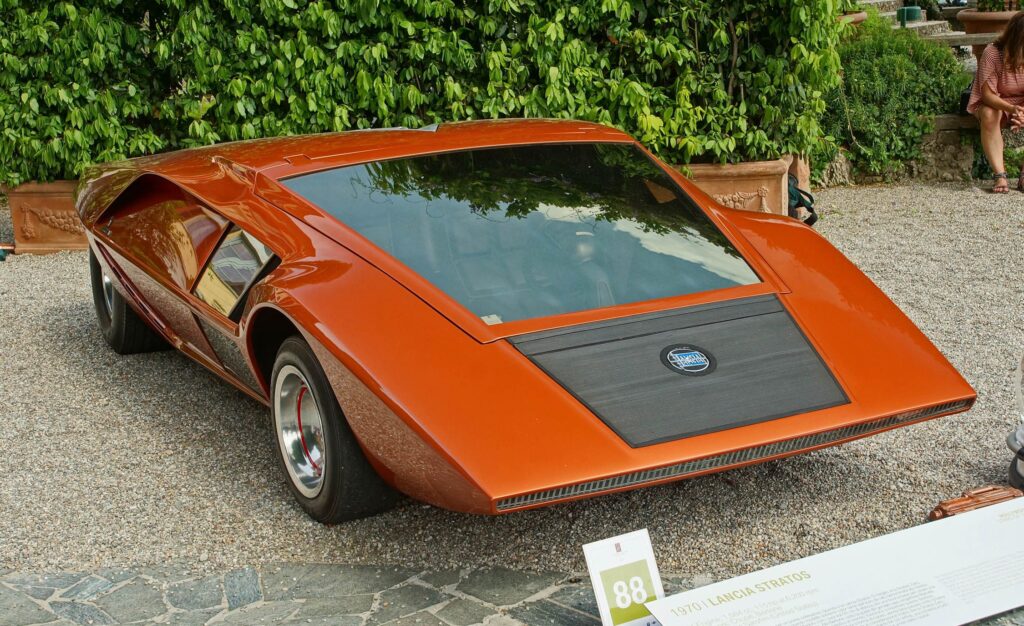
A New Design Language Emerges
The design language of the late 1960s and 1970s was a radical departure from the past. Clean lines, geometric shapes, and a focus on functionality replaced the ornate styling of previous eras. Designers like Giorgetto Giugiaro and Marcello Gandini emerged as the standard-bearers of this new aesthetic.
Giugiaro, with his rational approach, prioritized functionality and ergonomics. His designs were characterized by clean lines, efficient packaging, and a focus on the driver experience. Gandini, on the other hand, embraced a more dramatic and emotional approach, creating cars that were as much works of art as functional machines.
The Enduring Legacy
The designs that emerged from this era continue to cast a long shadow over the automotive industry. The emphasis on form, function, and emotion that characterized these cars has become the DNA of modern vehicles. Today’s SUVs and crossovers, for example, often incorporate elements of the wedge shape and muscular proportions pioneered in the 1970s.
The Pebble Beach Concours d’Elegance, by showcasing these iconic cars, has not only honored the past but also inspired future generations of designers. It is a testament to the enduring power of great design and a reminder that the best designs are those that combine form, function, and emotion in perfect harmony.


